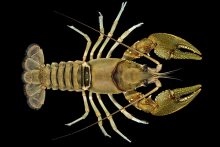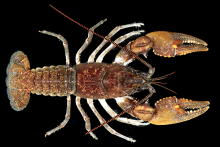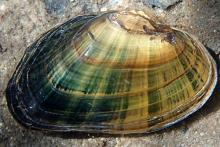
Blue Ridge Two-Lined Salamander
Scientific Name: Eurycea wilderae
Photo Credit: Todd Pierson
A selection of species found in North Carolina.

Scientific Name: Eurycea wilderae
Photo Credit: Todd Pierson

Scientific Name: Lepomis macrochirus
Classification: Game Fish
Abundance: Common throughout NC

Scientific Name: Lynx rufus
Classification: Game Species and Furbearer
Abundance: Common throughout state

Scientific Name: Morone saxatilis x Morone chrysops
Classification: Game Fish
Abundance: Stocked in several Piedmont reservoirs.

Scientific Name: Glyptemys (Clemmys) muhlenbergii
Classification: Nongame species; Federally and state listed as Threatened
Photo Credit: Jeff Hall

Scientific Name: Amia calva
Classification: Nongame Fish
Abundance: Common in the Coastal rivers of NC.

Scientific Names: Pseudacris brimleyi
Classification: Nongame species
Range: Coastal Plain (blue)
Photo Credit: Jeff Beane

Photo Credit: Michael Perkins
Scientific Name: Cambarus P spicatus
Classification: Special Concern

Photo Credit: Michael Perkins
Scientific Name: Cambarus C lenati
Classification: Nongame Fish - Crustacean


Scientific Name: Alasmidonta varicosa
Classification: State Endangered
Photo Credits: Michael Perkins

Scientific Name: Salvelinus fontinalis
Classification: Game Fish
Abundance: Mountain region in the western part of the state (green).

Scientific Name: Storeria dekayi
Photo Credits: JD Wilson
The Brown Snake can be found in forests under logs and rocks. It is light brown with gray and reddish-brown hues and a row of dark spots on its sides. The snake eats snails, slugs and earthworms and is non-venomous. Brown snakes have 4-25 offspring every summer.

Scientific Name: Salmo trutta
Classification: Game Fish
Abundance: Found in the mountain region in the western part of the state (green area).
